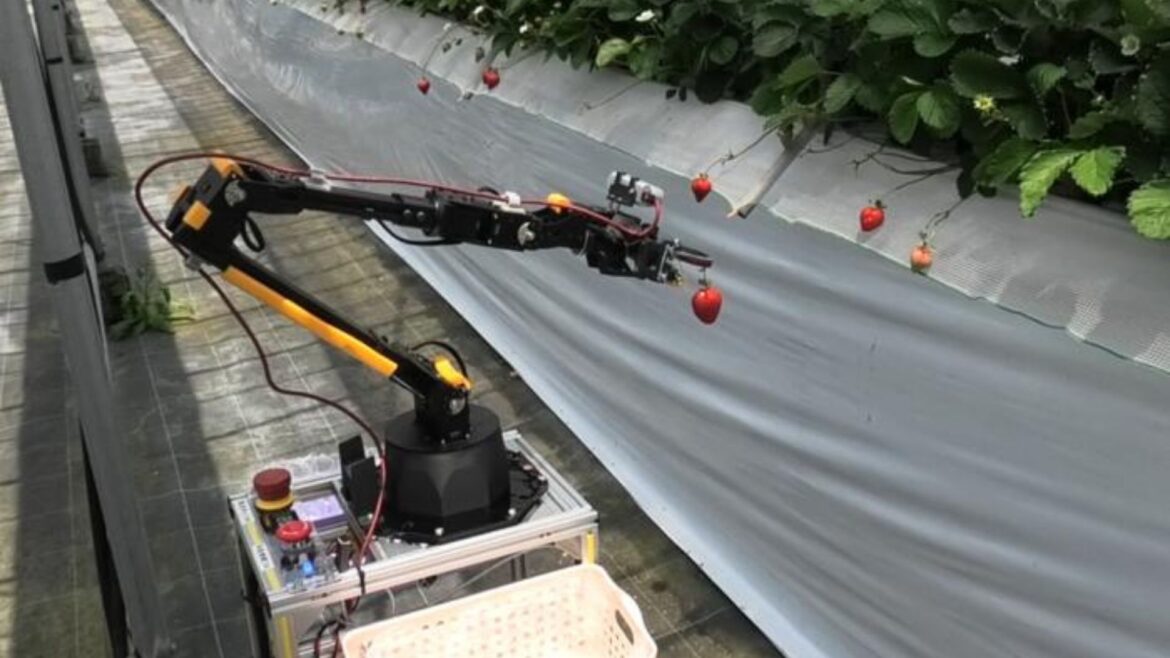Let’s be real, we all love strawberries.
But as beloved as they are, strawberries come with a notorious catch — they’re a nightmare to harvest.
They grow low to the ground, the slightest mishandling bruises their skin, and picking them requires time, precision, and a whole lot of manual labor.
Now, add a shrinking agricultural workforce to the picture, and it cannot be clearer that strawberry farming needs a helping hand.
To solve this labor shortage, researchers at Osaka Metropolitan University are developing autonomous robots designed to handle the complex task of navigating and operating in high-bed cultivation environments.
Assistant Professor Takuya Fujinaga from the Graduate School of Engineering and his team’s latest innovation equip agricultural robots with a specialized algorithm.
The algorithm allows them to move in two distinct modes — traveling to target destinations and following the contours of elevated planting beds.
At the core of this automation breakthrough lies lidar technology, a sensing method commonly seen in premium smartphones and self-driving cars.
High-bed cultivation meets cutting-edge tech
High-bed cultivation raises planting surfaces above the ground, reducing physical strain on human workers. But even with this improvement, harvesting strawberries, tomatoes, and other tender produce remains labor-intensive.
Fujinaga’s solution aims to bridge that gap by introducing automation into an environment that still relies heavily on manual work.
The newly developed robot uses lidar (Light Detection and Ranging) sensors to scan its surroundings using laser pulses.
This allows the robot to generate detailed 3D maps known as point clouds, giving it a clear view of the terrain, plants, and any obstacles. Compared to traditional GPS navigation, lidar offers far greater precision, crucial when working in narrow rows or uneven terrain.
Two-mode movement navigation
The algorithm lets the robot switch between two key navigation styles. It can autonomously drive to a specific destination, such as a harvesting zone, or track alongside a raised bed while maintaining a steady, optimal distance.
This flexibility allows it to handle the varied and often unpredictable layout of agricultural fields with consistency.
The team validated the robot’s performance through experiments in both virtual simulations and real-world fields.
The trials confirmed that the robot could maintain smooth, reliable movement even when bed heights varied or terrain conditions shifted. This level of adaptability makes the robot a strong candidate for integration into actual farm operations.
Road toward fully automated farming
Beyond harvesting, Fujinaga sees broader potential for these robots. “If robots can move around the farm more precisely, the range of tasks that they can perform automatically will expand, not only for harvesting, but also for monitoring for disease and pruning,” he said.
By allowing robots to handle not just picking, but also crop monitoring, targeted pruning, and possibly even irrigation or fertilization, this technology could drastically reshape how farms operate.
As these machines become more practical and scalable, they promise to reduce the physical burden on farm workers, increase efficiency, and promote more sustainable practices.
With food demand rising and labor supplies shrinking, innovations like this could be the key to securing the future of high-value crops like strawberries.
The study is published in the journal Computers and Electronics in Agriculture.


AloJapan.com